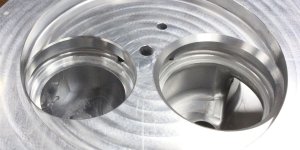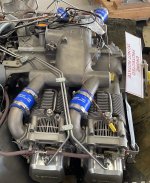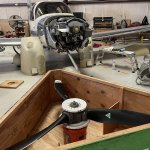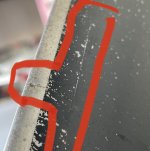Weight & Balance
Ok, time to answer the question of weight.
During the research phase of this project, I placed a call to Tule River Aerospace, who was doing the SMA C182 conversions. The before and after weight of the STC was +125lbs and ¾” C.G. change on one particular plane. Not the lightest conversion, but it’s a diesel, so I knew what I was in for. Since mine was never a flying IO540 powered plane, I didn’t have an accurate “before” weight. I figured that, based on other flying Rv-10s, I should have been in the 1700lbs+ EW, which, should have brought the conversion in at about 1850lbs EW.
Well, to my disappointment, it wasn’t. It was closer to 1915lbs. Why so much heavier? Well, I didn’t weigh everything as it went into the airframe and the FWF but I’ve had time to think about it and believe the following is correct: It is a “well primed” structure (don’t start a Primer War with me here), local grounds were not used, sound insulation (some of which has since been removed) in the “tub”, and I made my own cowling out of the original Van’s cowl (some would call it overbuilt and resin rich). Over the four years I had the TD300, mods were made to the cowling, fuel metering system, oil cooler, and the brakes were upgraded (heavier duty) due to the higher residual thrust. So, no it didn’t really get lighter during that time, but it hauled everything I needed and it was a work in progress.
Due to Covid, some engine development issues, and management changes, the CD-265 production was put on hold in 2020 and I returned the prototype to CMI (status is unknown as I haven't talked with them since then). At the same time, Safran sold the SMA engine line to the Roder Group in Germany, so I was able to finally get my “certified” engine. I spent 2021 dealing with Covid supply chain issues while converting to the SMA SR305-230E. I kept better weight records of the parts I used and also tried to find lighter ones along the way but could only do so much. The SR305-230-1 was published at 430lbs dry weight and the -230E is listed at 456lbs dry weight. The TD-300C+ (my prototype engine) was around 441lbs dry weight according to CMI. So, when I weighed the plane again, I wasn’t surprised that it gained weight- over 1950lbs EW. The FWF spreadsheet I created comparing the IO540 to the SR305 put the conversion at 140lbs different. Yes, it is heavy.
So, I have started a weight reduction program:
1- Remove 8.6lbs FF measurement system- Engine computer tells Garmin the FF.
2- Remove 15lbs SafeAir One aux tanks.
3- Remake cowing and ducts to be lighter by 15-20lbs.
4- Lighter weight brakes 5lbs.
5- Remove Concorde Main battery and backup battery system and replace
with EarthX -25lbs.
Total weight savings- 68 lbs. when it’s all done.
Currently flying at 1940lbs EW and 107.87 CG. Aiming for 1895Lbs EW and 107.54 CG.
For an additional data point, I am working with a company in Brazil to install this engine in the Rv-10 for their market. They did get an early CD-265 flying for a short time before 2020 issues stopped it. Their plane weighed in at 1898lbs EW painted with an A/C system and an identically equipped IO540 plane weighed 1778lbs. Converting to the SR305-230E will change the numbers but time will tell.










